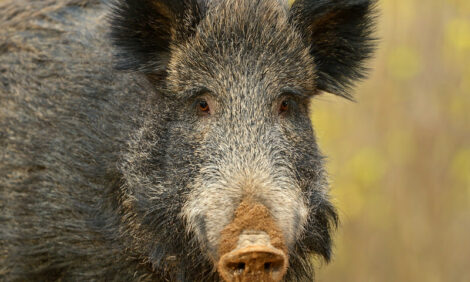



CME: Maple Leaf Finds Buyer; Positive Fall for US
US & CANADA - Maple Leaf Foods, Canada’s second largest hog slaughterer, announced this week that it has finally found a buyer and closed the deal to sell its Burlington, Ontario slaughter facility, write Steve Meyer and Len Steiner.The company had first tried to sell the facility in 2007 and then had
pulled it off the market after the recession began, ostensibly because capital markets had limited the ability of potential buyers to bid on
the plant. Maple Leaf announced this past spring that it was again actively trying to sell the plant which, in the latest information we have
from the Canadian Pork Council, has a capacity of 43,500 head per week or just over 8,000 per day. That makes Burlington the third largest
plant in Canada, trailing only the Maple Leaf plant in Brandon, Manitoba (90,000 head per week) and Olymel’s plant in Red Deer, Alberta
which is also listed at 90,000 head per week but, to our knowledge, has never operated very close to that level of throughput as
western Canada hog numbers have declined.
Fearman’s Pork, an affiliate of Sun Capital Partners is the buyer. Maple Leaf will be a major customer of the business entity
which will supply Maple Leaf’s eastern Canada processing operations. The sale is part of Maple Leaf’s strategy to focus on domestic value-
added pork products and de-emphasize exports. That does not mean
that Maple Leaf has abandoned export markets but they are not the company’s
focus and are far less important than during 2001 through 2003
when Canada was actually the world’s largest single pork exporting country.
That was when $Can was worth $0.65US. Interestingly, Anthony
Polazzi, Principal at Sun Capital mentioned expanding into exports and
building the company’s value-added business as two areas they see as
opportunities.
Ontario’s pork producers are, no doubt, breathing a sigh of relief
over the fact that the plant will still be operated since it comprises nearly
half of the province’s slaughter capacity. But the sale also means that
Canada’s pork slaughter sector will still have significant over-capacity.
Canadian slaughter has not exceeded 450,000 in any week since late
2005 and the country could slaughter 481,000 per week with Olymel Red
Deer counted at a full double shift. If that second shift in Red Deer is not
realistic, then Canadian capacity and peak slaughter for 2008 and 2009
are reasonably aligned.

Meanwhile, it has been a decidedly positive fall — and year and, for that matter 18 months — for US pork packers. Our calculated gross margin (value of the carcass + value of the by-products - average cost of the pig) reached nearly $45/head last week. That figure is still smaller than several weeks at the end of 1998 and beginning of 1999 but its certainly the highest since then. It eclipsed some excellent weekly figures in August as well. What is driving these higher margins?

The recent increases has been fueled by large hogs and lots of
them. The US sector has been running near capacity and producers
are having to keep hog moving at a rapid clip. The allows packers to buy
hogs lower and, in this instance, they have been able to maintain reasonably
strong selling prices, keeping the meat margin high. Add in nearrecord
by-product values of about $20/head and you get good profits.
These near-record margins, though, are part of a pattern of wider
margins that really started in the summer of 2009. Readers must realize
that these are gross margins from which all other costs must be paid
to realize a net profit. And it is certain that packers’ costs, like those of
most businesses, have increased since 2007 due to higher energy costs
and the higher costs of other goods such as packaging materials that
those energy costs can impact. Still, these margins are big and, should they continue, will no-doubt encourage expansion or entry. Producer-
owned Triumph Foods has the ground-work in place for another plant in Moline, Illinois, so that may not be a stretch at all. Wider margins
have historically preceded rallies in cash hogs and that could also happen now, especially if numbers and weights fall a bit.








